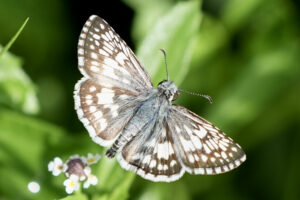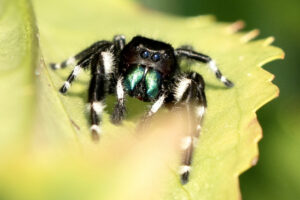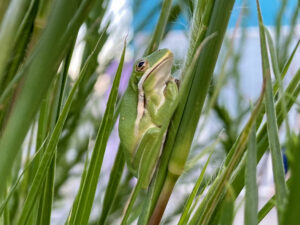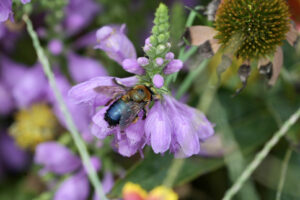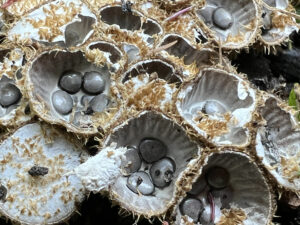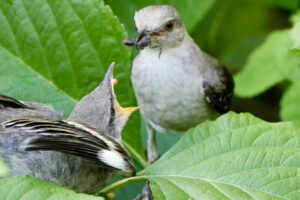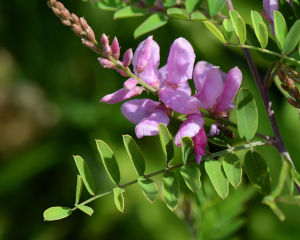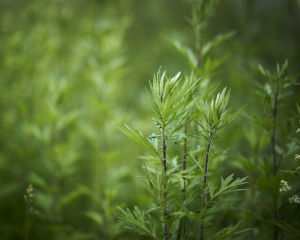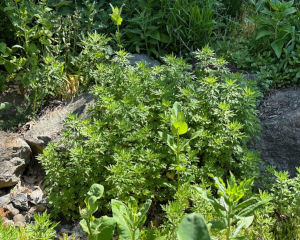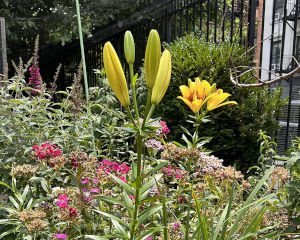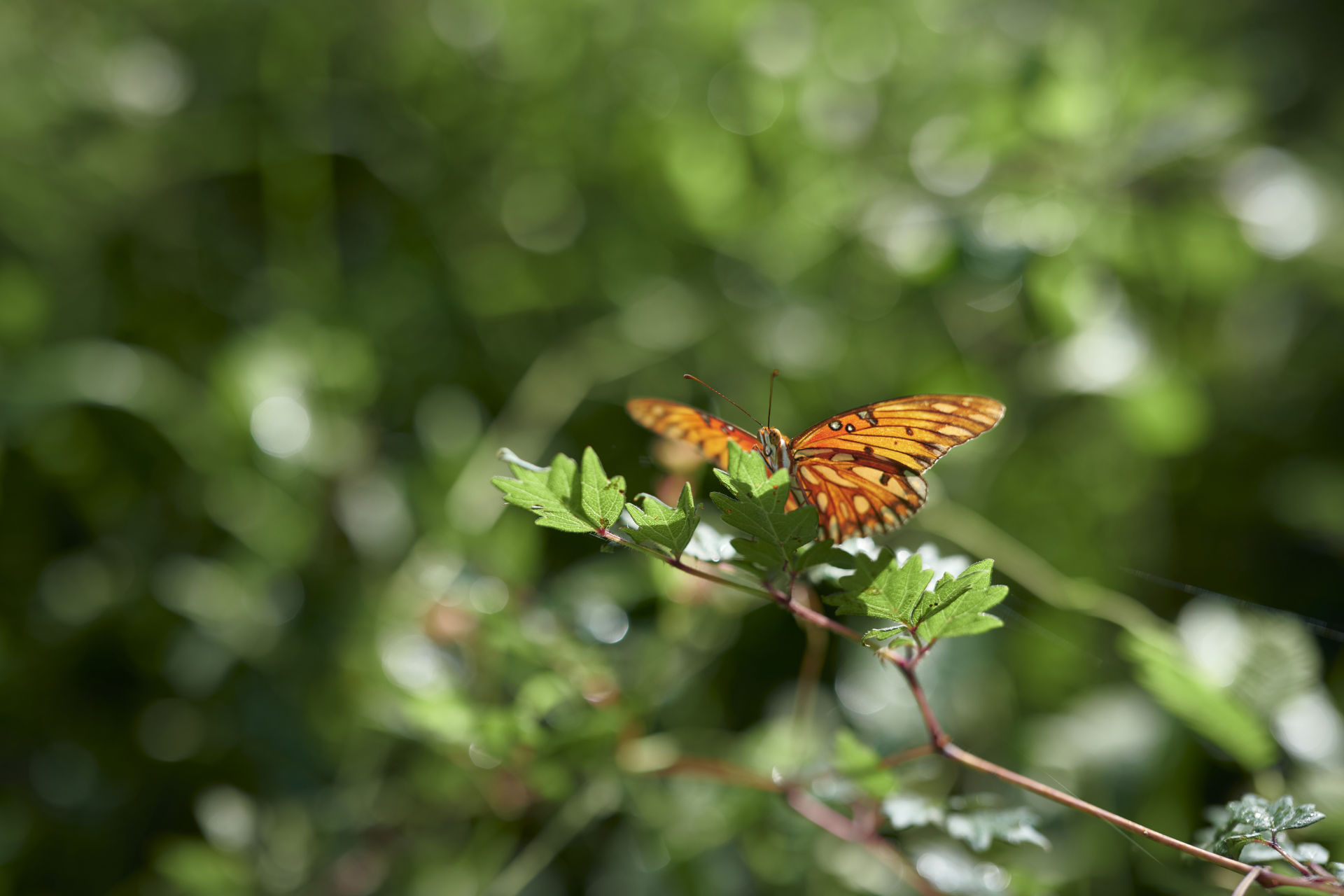
The Ecological Impact and Potential of the American Lawn
By Jake Eshelman
Sign up for our monthly newsletter!
“There’s just no community.”
I didn’t quite grasp her meaning. So after a brief pause over the phone, my friend elaborated, “Think about it. When people walk by your garden, they stop and talk. You can’t do that over a noisy lawn mower.”
I take her point—not that I needed much convincing with the pervasive racket of her neighbor’s lawn crew infiltrating our conversation. There is indeed a considerable difference between the atmosphere created by dynamic exuberance of a garden compared to that of the uniform potential of a manicured monoculture. This isn’t to say that the American lawn lacks merit. It is after all a place to gather, picnic, and play, among many other things. But it’s also fair to say that lawns often function more as set dressing; an unconscious or even obligatory attempt to prop up the picturebook idea of what a home should look like.
Why do we collectively cling to lawns? And what might we accomplish when we think differently about our everyday, outdoor spaces?
The true costs of keeping up appearances
The lawn is a cultural construct. As a term used to designate an area of shortly-cut grass, the lawn is literally defined by the idea of active and ongoing maintenance.1 It is neither naturally occurring nor ecologically oriented. Rather, the lawn embodies humanity’s quixotic attempt to organize nature—and the increasingly high cost associated with our efforts.
It’s astounding to consider the environmental, social, and even economic impact of lawns. Each year, Americans alone spend $76 billion in lawn care.2 Similarly, lawns across the U.S. consume 3 trillion gallons of water annually.3 The associated machines used for lawn maintenance collectively guzzle 800 million gallons of gasoline on a yearly basis—and that’s before factoring in the additional 17 million gallons that are spilled in the process.4 This is particularly poignant given that the average leaf blower releases more hydrocarbons than a 2011 Ford F-150.5 Speaking of environmental pollutants, the mere production of synthetic nitrogen fertilizers for lawns generates 15 million tons of CO2 emissions each year.6 Once the fertilizer is applied to a lawn, the EPA reports that up to 60% of it seeps into the water table, leading to biodiversity loss, toxic algae blooms, and other ecological damage.7 Even the noise associated with landscaping has been found to adversely impact human health through hearing loss, cardiovascular conditions, and other issues.8
Noise is considered dangerous when it exceeds 85 decibels (dBA).9 In an occupational health study centering on landscapers, researchers found that the noise produced by push mowers (86–92 dBA), riding mowers (88–96 dBA), leaf blowers (95–106 dBA), edgers (98–106 dBA), chippers (102–106 dBA), and chainsaws (105–109 dBA) all pose an active risk to human health.10
As you can see, the impact of lawn care is immense. This begs the question: why do we inflict this on ourselves and the planet?
To even consider the nature, role, and possibilities of a lawn is to reveal deeper questions about what we value. For many, the answer is money. In their marketing materials, some lawn care companies suggest that maintaining a well-manicured lawn can increase a home’s value by fifteen percent.11 This aesthetic attachment to a landscaped yard has even undermined the sense of community they’re meant to create. In Southern California, a man recently faced jail time for not watering his lawn during an intense drought. Elsewhere around the country, homeowners associations have made headlines for issuing fines to homeowners who have replaced their resource thirsty lawns with self-sufficient native plants.
The active criminalization of endemic plant species in favor of specific grasses brought to North America by European settlers speaks to an ongoing campaign of ecological imperialism.12 (The socio-political parallels abound as well throughout U.S. history, but I am not that theorist and this is not that paper.) However, I nonetheless maintain that lawns themselves are not evil. Grass is not the enemy. Instead, the lawn’s true aesthetic, cultural, and political power lies not within its historic legacy or privileged status amongst HOAs, but with you. What you choose to cultivate around your home makes a massive difference—and odds are that your greenspace offers more ease and possibility than you might think.
A blank green canvas
I admit that it’s a bit bizarre to see all of this meaning in something as banal as a lawn, but even the most mundane expressions of material culture can reveal entire cosmologies.13 Yet, it’s also through culture that we reveal other ways of seeing the world. My own journey into the impact and potential of American lawn began through conversations with visual artist Cindee Klement, who is a dear friend, colleague, and a veritable wealth of knowledge regarding how subtle changes in human behavior can radically benefit the natural environment. Over the course of our friendship, I’ve been especially soothed and inspired by her living land installation, Symbiosis, at Lawndale Art Center in the heart of Houston, TX. At its most fundamental, this work offers a generative and resolutely optimistic case study for reenvisioning role, funcation, and character of the lawn—even in the seemingly inhospitable, concrete-laden city center.

Photograph by Jake Eshelman
To create Symbiosis, Cindee gradually transformed the lawn of the Mary E Bawden Sculpture Garden into a self-sustaining oasis teeming with life. Working mostly around the perimeter of a central lawn gathering space, she introduced a variety of native plant species who—unlike turfgrass—innately encourage biodiversity, store carbon, and soak up rainwater.
At its core, Symbiosis is a social sculpture. Its very mechanism is cooperation inherent in ecological relationships. Having evolved in sync and in situ with the local environment over millions of years, the native prairie plants Cindee collaborates with are uniquely able to flourish in the extremes of Houston’s climate. Whereas turf grass tends to deplete the soil, native plants grow vastly deeper roots that actively support soil health by preventing erosion, enriching the nutrient cycle, and improving water percolation.14
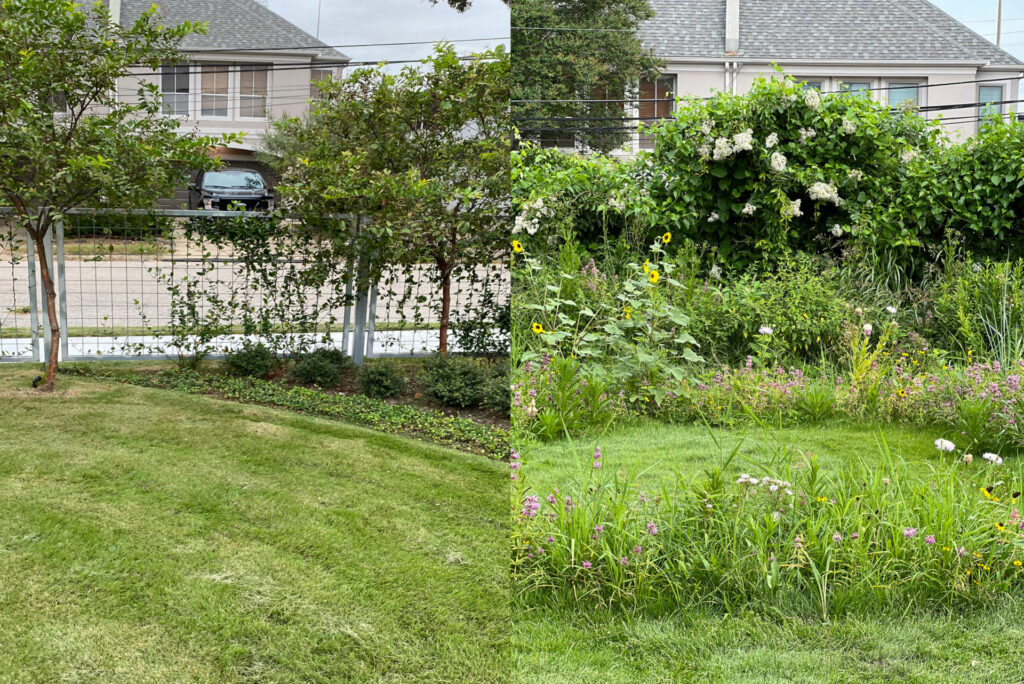
Images courtesy of Cindee Klement
Native plants are masters at building connections. By cultivating cooperative relationships with fungi, microorganisms, and animals, native prairie plants also help to pull carbon out of the air and store it in the soil.15 That alone benefits the overarching ecosystem and our ongoing fight against climate change. Additionally, Cindee’s (re)introduction of native terrestrial and aquatic plants attracted throngs of insects, birds, amphibians, and mammals (including humans). In an unlikely greenspace surrounded by asphalt, concrete, and brick, the installation offered a vital source of food and shelter. In doing so, it transformed a place into a home. It became a hub for talks, workshops, potlucks, meditations, and ecotherapy. In short, Symbiosis creates community.
A small smattering of the many species spotted in Symbiosis. The sighting of the tree frog—now a rarity in Houston—indicates a thriving ecosystem.
Images courtesy of Cindee Klement
Cindee’s installation confronts us with incredible possibilities to, as she puts it, “transform turfgrass into biology.” Happily, it’s also not difficult to get started. As an extension of Symbiosis, Cindee also created a step-by-step guide for how to incorporate a thriving ecology into any lawn space. Granted, the specific plants you work with will vary depending on your location, the general principle remains the same: biodiversity is resilience.
There is also an increasing awareness and support for maintaining native plants in your lawn. Some lawn care equipment manufacturers are even jumping onboard by introducing innovations like “Rewilding Mode” on automated, robotic mowers that use GPS to leave 10% of your lawn unmown to support biodiversity. If nothing else, it’s a start.
Transforming the American lawn is one of many ways to address the unprecedented and unfolding impacts of anthropogenic climate crisis. When we shift our values and vision surrounding our greenspaces, the simple act of rewilding at least a portion of your lawn can make a massive difference in supporting biodiversity, curbing emissions, conserving freshwater, and building healthier relationships—both in and well beyond your garden.
Author Bio
Beyond his role as the Contributing Editor of Ecological Thinking at Plantings, Jake Eshelman is a photo-based artist and visual researcher exploring the complex relationships between people and other-than-human beings. Working to transcend the notion that humanity is somehow separate from—or superior to—the natural world. You can learn more about his work, writings, and publications online and via Instagram.
Sources
1 Cambridge English Dictionary, “Lawn”, [Accessed 7 June, 2023], https://dictionary.cambridge.org/us/dictionary/english/lawn
2 Forest Preserve District Willcounty, “When it comes to our lawns, many of us are keeping up with the Joneses”, 28 April, 2020, [Accessed 10 June, 2023] https://www.reconnectwithnature.org/news-events/the-buzz/when-it-comes-to-our-lawns-many-of-us-are-keeping
3 Natural Resource Defense Council, “More Sustainable (and Beautiful) Alternatives to a Grass Lawn”, 30 Sept, 2016. [Accessed 10 June, 2023] https://www.nrdc.org/stories/more-sustainable-and-beautiful-alternatives-grass-lawn
4 Iowa City Press-Citizen, “Reconsider lawn maintenance for the good of the planet”, 20 Mar, 2019 [Accessed 10 June, 2023] https://www.press-citizen.com/story/opinion/contributors/writers-group/2019/03/20/reconsider-lawn-maintenance-good-planet/3195901002/
5 The Washington Post, “How Bad for the Environment Are Gas-powered Leaf Blowers?”, 16 Sept, 2013 [Accessed 10 June, 2023] https://www.washingtonpost.com/national/health-science/how-bad-for-the-environment-are-gas-powered-leaf-blowers/2013/09/16/8eed7b9a-18bb-11e3-a628-7e6dde8f889d_story.html
6 Princeton Student Climate Initiative, “Lawn Maintenance and Climate Change”, 12 May, 2020 [Accessed 7 June, 2023] https://psci.princeton.edu/tips/2020/5/11/law-maintenance-and-climate-change
7 The Washington Post, “Americans Are Judging their Neighbors’ Lawns with Surprising Environmental Consequences”, 11 Mar, 2015 [Accessed 10 June, 2023] https://www.washingtonpost.com/news/energy-environment/wp/2015/03/11/forget-what-your-neighbors-think-stop-dousing-your-lawn-with-so-much-fertilizer/
8 Kerns E, Masterson E, Themann C, Calvert G [2018]. “Cardiovascular conditions, hearing difficulty, and occupational noise exposure within US industries and occupations”. Am J Ind Med 61(6), 477-491.
9 National Institute for Occupational Safety and Health (NIOSH) Criteria for a Recommended Standard: Occupational Noise Exposure, revised criteria. Cincinnati, OH: US Department of Health and Human Services, Public Health Service, Centers for Disease Control and Prevention, Publication 98-126.
10 Balanay JA, Kearney GD, Mannarino AJ [2016]. Assessment of occupational noise exposure among groundskeepers in North Carolina public universities. Environ Health Insights 10:EHI-S39682, https://doi.org/10.4137/EHI.S39682.
11 Green Lawn Fertilizing, “Lawn Care and Property Values”, [Accessed 7 June, 2023],
https://www.greenlawnfertilizing.com/blog/lawn-care-property-values/#:~:text=How%20Much%20a%20Well%20Kept,landscape%20can%20improve%20home%20values.
12 Planet Natural, “Lawn History”, May 5, 2018. [Accessed 7 June, 2023] https://www.planetnatural.com/organic-lawn-care-101/history/
13 Prown, Jules David. “Mind in Matter: An Introduction to Material Culture Theory and Method.” Winterthur Portfolio, vol. 17, no. 1, 1982, pp. 1–19. JSTOR, [Accessed 9 June 2023] http://www.jstor.org/stable/1180761
14 Sustainable Agriculture Research and Education, “Native-Grass Prairie Restoration and Soil Remediation Program”, [Accessed 10 June, 2023] https://projects.sare.org/sare_project/fs08-226/#:~:text=Native%20grasses%20will%20extend%20deeper,water%20draining%20into%20the%20watershed
15 Teague, Richard, et al. “Links of microbial and vegetation communities with soil physical and chemical factors for a broad range of management of tallgrass prairie”, Ecological Indicators, Volume 142, 2022, 109280, https://doi.org/10.1016/j.ecolind.2022.

As Ireland transitions from the rich, smoky scent of peat-burning to a more sustainable future, its olfactory heritage is evolving. What will become the next iconic aromatic symbol of Ireland?
Click to watch the documentary trailer.
Plantings

Eat More Plants Recipes:
Heirloom Tomato with Fermented Blackberries and Roasted Kale Stem Oil
By Tessa Liebman


